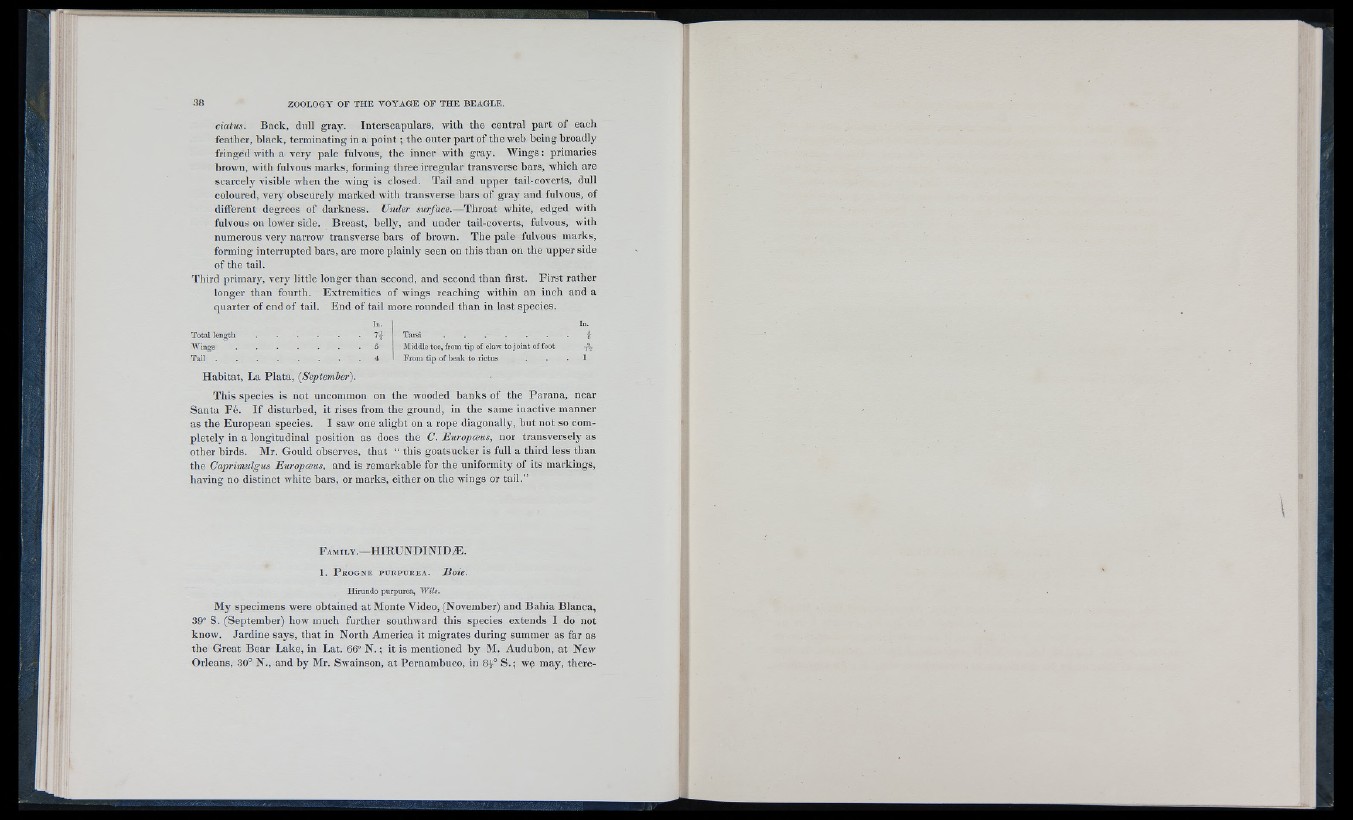
38
i
ciatus. Back, dull gray. luterscapulars, with the central part of each
feather, black, terminating in a poin t; the outer partof the web being broadly
fringed with a very pale fulvous, the inner with gray. Wings : primaries
brown, with fulvous marks, forming three irregular transverse bars, wliich are
scarcely visible when the wing is closed. Tail and upper tail-coverts, dull
coloured, very obscurely marked with transverse bars of gray and fulvous, of
different degrees of darkness. Ihider surface.—Throat white, edged with
fulvous on lower side. Breast, belly, and under tail-coverts, fulvous, with
numerous very narrow transverse bars of brown. The pale fulvous marks,
forming interrupted bars, are more plainly seen on this than on the upper side
of the tail.
Third primary, veiy little longer than second, and second than first. First rather
longer than fourth. Extremities of wings reaching within an inch and a
quarter of end of tail. End of tail more rounded than in last species.
Total length
Wings
Tail .
Middle toe, from tip of claw to joint of foot
From tip of beak to rictus
Habitat, La Plata, {September).
This species is not uncommon on the wooded banks of the Parana, near
Santa Fe. I f disturbed, it rises from the ground, in the same inactive manner
as the European species. I saw one alight on a rope diagonally, but not so completely
in a longitudinal position as does the C. Europceus, nor transversely as
other birds. Mr. Gould observes, that “ this goatsucker is full a third less than
the Caprimulgus Europceus, and is remarkable for the uniformity of its markings,
having no distinct wliite bars, or marks, either on the wings or tail.”
F a m i l y .— HIR U N D IN ID ^ .
1 . PRO G N E PURPUREA. lioie.
Hirundo purpurea, Wils.
My specimens were obtained at Monte Video, (November) and Bahia Blanca,
39° S. (September) how much further southward this species extends I do not
know. Jardine says, that in North America it migrates during summer as far as
the Great Bear Lake, in Lat. 66° N.; it is mentioned by M. Audubon, at New
Orleans, 30° N., and by Mr. Swainson, at Pernambuco, in 8^° S.; we may, there